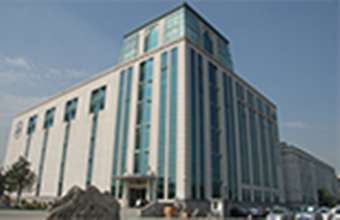The Geological Museum of China


Image from the official website of the Geological Museum of China. [Photo/gmc.org.cn]
The Geological Museum of China is a national level museum of geological science and ranks as the No.1 geological museum in Asia.
The museum is the earliest geological scientific museum of China. Its predecessor can be traced back to the Geological and Mineral Products Exhibition Hall of the Geological Investigation Office founded in 1916. Its construction area is 10,000 square meters.
History
The museum first opened to the public on October 1, 1959, and was fully reconstructed by the end of 2009. It researches geological scientific technologies and natural science. It also launches consulting activities about geological scientific technologies by providing geological specimens and materials, and directly undertakes national and local production, scientific research and education tasks. In addition, it is active in scientific popularization activities such as geological science summer camps, photography events, and film showing.
Collection
At present, the Geological Museum of China has more than 100,000 geological specimens. Many of them are precious items designated "National Treasures", such as "the Giant Shandong Dinosaur" fossil, the most complete dinosaur fossil extant in the world; the fossils of primitive birds that were found in the west of Liaoning Province, which are of essential value in research on birds of the area; the teeth fossils of Yunnan Yuanmou Man, which shift the appearance of human beings in China to a much earlier time; the stoneware, stone pearls, bone needles and bone decoration unearthed from the site of the Upper Cave men at Zhoukoudian in Beijing; a cinnabar crystal of 237 grams known as the "King of Cinnabar"; and more than 60 new mineral products discovered in China.
The hall of geological resources introduces in different catalogues and classifications the abundant minerals and other geological resources in China, while the hall of global history introduces earth formation and construction and its basic geological nature and actions. The stratum paleontology hall exhibits the Zhendan biome, insect fossils, fish fossils, egg fossils, and the Upper Cave Man -- ancient creatures and their characteristics of different geological eras.
The hall of mineral rocks showcases the beautiful mineral crystals or crystal treasures from China and overseas areas, with more than 1,200 varieties of specimens of over 1,000 mineral products, and over 800 classic rock specimens of three different kinds of rocks -- magma rock, alluvial rock and transformation rock. The diamond hall can be divided into four parts, namely diamond, jade, colorful stone and ink stone. It displays the raw stones and finished stones of the common diamonds, the traditional jade and color stone varieties of China and the products and craftworks developed in recent times as well as famous and common ink stones and raw stones in China. It is the earliest and largest-scale diamond exhibition in China and is recognized by the vast number of diamond fans.
In addition to permanent exhibitions, the museum often organizes temporary displays of topics such as Chinese petroleum geology, geological technological revolution, and earthquakes.
Address: No 15, Yangrou Hutong, Xisi, Xicheng District, Beijing
Website: http://www.gmc.org.cn/ (Chinese)
Open hours: 9:00-16:30 (No admission after 16:00)
Closed on Mondays (except on national holidays)
E-mail: gmcit@sohu.com
Ticket: Adults: 30 yuan
Students: 15 yuan
MOST POPULAR
- 1 China Daily's 'Shopping in China' platform appeals to intl audiences
- 2 China updates Catalogue of Encouraged Industries for Foreign Investment
- 3 Policies concerning expats, foreign enterprises in December 2025
- 4 China becomes the world's fourth manufacturing power
- 5 China ascends global higher education ranking







